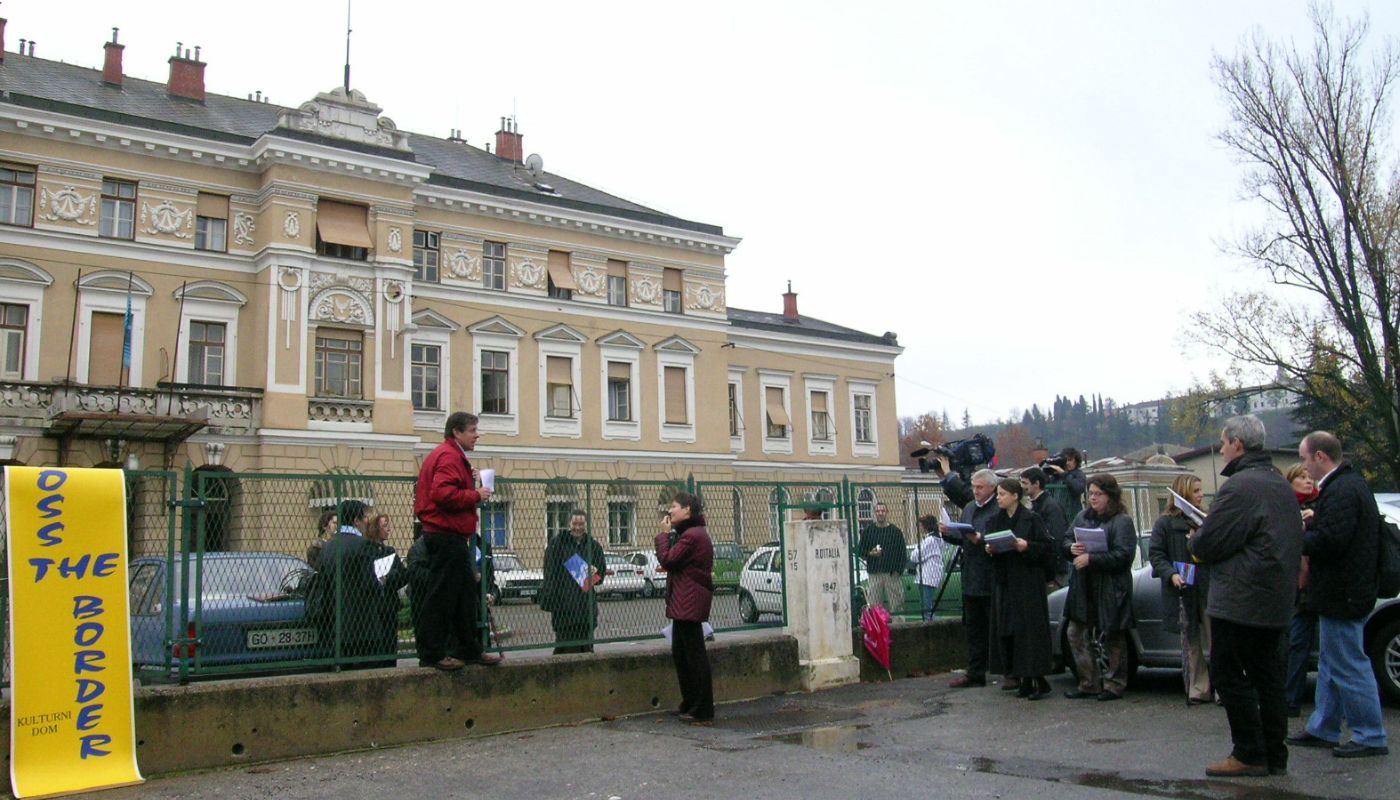I often read in the Italian media about the “Gorizia Wall”, which was supposed to be erected in 1947, 14 years before the construction of the Berlin Wall.
I was born in 1952 and since then I have been living in Gorizia, and for thirty years only about twenty meters from the border, on Škabrijelova Street, the main artery that connects the city with Nova Gorica. But I’ve never seen the Gorizia Wall, I’ve never noticed it… True, there was a “border”, but it was the usual border, with the usual checks – as with Austria and other neighbouring countries. Perhaps the peculiarity was in the “pass”, a transit permit that since 1955, with the signing of the Udine Agreement, has made it easier for residents of the border area to cross the border.
On November 22, 1989, only 13 days after the fall of the Berlin Wall, Gianfranco Fini, the then secretary of the MSI, came to us with a mace in his hand to tear down the “Gorizia” Wall. He asked passers-by: “Where is the wall? Where is the Goriška wall?” When he didn’t find it, he hit the concrete curb that carried the net between Catterini Street and today’s “common square of the two Gorizias” (Europe Square for the people of Novi Grica and Transalpina Square for the people of Gorica). The invisible “Goriška wall”, if it ever existed, fell on August 13, 1950, on the occasion of the so-called “Broom Sunday” (La domenica delle scope).
Why did I mention this fact? Because “Gorizia and Nova Gorica” was a tangible term in post-war history, during the Cold War, in a world divided into two blocs. open borders” between Italy and what was then Yugoslavia. They were a symbol of openness, a two-way threshold in a divided world at the time.
Also because of this specificity, the “twin cities of Siamese” were named “Nova Gorica – Gorizia European Capital of Culture 2025”!
It is true that the tragedies of the fascist period and the post-war period (deportations, executions, bans on the use of the Slovenian language, attempts to erase the Slovenian community, then foybes, exodus, etc.) left deep wounds in the local population – both Italian and Slovenian and Friulian. However, as early as 1947, immediately after the beginning of the formation of Nova Gorica, the will to “open up”, remove barriers and cooperate was evident on both sides of the border.
There are people and organizations in the world who are trying to build walls, but there are also those who are trying to build bridges, connections, relationships between people – in recognition of their diversity. Since 1947, when Nova Gorica was founded, some have been building walls and fences, but at the same time, many have been building, even in the decisive moments of the Cold War , bridges: concrete and symbolic, with a sign of the abolition of borders and cross-border cooperation.
Among these bridge architects there are many “people from Gorica and Novi Gorica”. And in this cross-border connection of “bridges” – according to personal experience of practices from the operation of the Cultural Centre in Gorica – Slovenian organizations from the neighbouring countries have never stood idly by and waited for 2025 to weave cross-border ties and implement an open border. Cross-border contacts, cross-border cooperation, are literally written on our skin, they are part of our everyday life, that is, a DNA molecule, a carrier of our genetic cross-border information.
